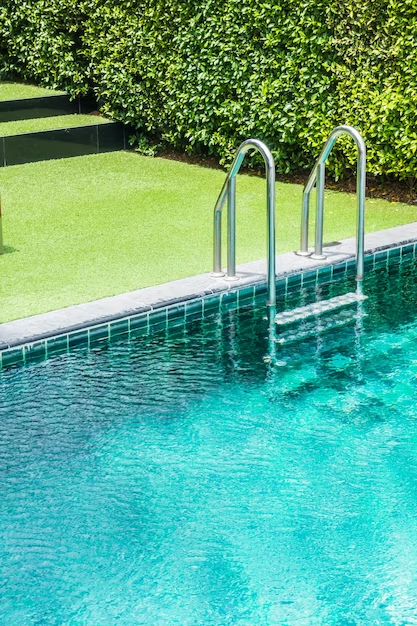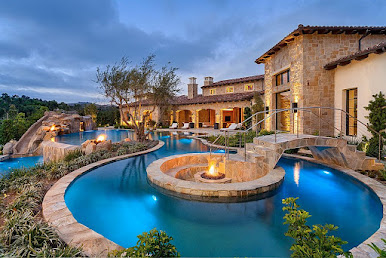Pool Gate Regulations: A Comprehensive Guide to Keeping Your Pool Safe
Australia is known for its beautiful climate and a love for outdoor living. Many households in Victoria, particularly in Melbourne, have a pool in their backyard. While having a pool can be a great source of enjoyment, it also comes with significant responsibilities. Victoria pool fence regulations Safety is paramount, and to ensure the safety of all residents and visitors, Victoria has strict regulations in place for pool fences, gates, and inspections.
1. Fence Height: The fence surrounding the pool must be at least 1.2 meters (approximately 4 feet) high. This is to prevent young children from climbing over the fence and gaining access to the pool area.
Victoria
pool fence regulations
2. Gaps and Openings: To prevent small children from squeezing through or getting their limbs stuck, the gaps or openings in the pool fence should not be greater than 100mm.
3. Climbable Objects: Any objects that can be used to climb over the fence must be kept at a safe distance away from the fence. This includes things like garden furniture, planter boxes, and toys.
4. Self-Closing and Self-Latching Gates: Pool gates must be equipped with self-closing and self-latching mechanisms. The gate should swing away from the pool area, and the latch should be at a height that is difficult for small children to reach.
5. Clear Zone: A clear zone must be maintained around the pool fence. This means that there should be no trees, shrubs, or other structures that would allow someone to climb over the fence.
6. Non-Climbable Zone: A non-climbable zone should be established around the pool fence. This means that there should be nothing within 900mm of the inside of the pool fence that can be climbed.
7. Resuscitation Sign: A resuscitation sign should be prominently displayed near the pool area, indicating the location of resuscitation equipment.
8. Maintenance: Regular maintenance of the pool fence is essential. This includes ensuring that the fence is in good condition, without any rust, damage, or deterioration.
Pool Gate Regulations in Victoria:
The gate is a critical element of pool safety. In Victoria, specific regulations govern the design and maintenance of pool gate regulation Victoria to ensure their effectiveness in preventing unauthorized access to the pool area.
1. Self-Closing: The gate should be designed to automatically close and latch when released from any position. It should not be able to remain ajar.
2. Self-Latching: The gate must have a self-latching mechanism that is located at least 1500mm above the ground, making it difficult for small children to reach.
3. Outward Swinging: The gate should open away from the pool area, which makes it more difficult for children to push it open accidentally.
4. No Climbable Elements: There should be no climbable elements on the gate itself, and it should be free from any modifications or additions that could compromise its safety.
5. Maintenance: As with the pool fence, regular maintenance of the pool gate is crucial. The gate should operate smoothly, without any signs of wear and tear.
Pool Safe Inspections in Victoria:
To ensure compliance with pool safe Victoria conducts pool safe inspections. These inspections are essential in making sure that pool owners are adhering to the safety guidelines and keeping their pool areas secure.
1. Scheduled Inspections: In Victoria, it is mandatory for pool owners to have their pool safety barriers inspected and certified by a registered pool safety inspector. These inspections must occur at least once every four years for shared pools (like apartment complexes), and once every two years for non-shared pools (like those in private homes).
2. Compliance Assessment: During the inspection, the pool safety inspector assesses the pool fence, gate, and surrounding areas to ensure they comply with safety regulations. Any non-compliance issues are identified and reported.
3. Certificate of Compliance: If
the pool area passes the inspection, the pool owner receives a Certificate of
Compliance. This certificate is crucial when selling or leasing a property with
a pool, as it is a legal requirement to provide it to the buyer or tenant.
4. Rectification Notice: If the pool area fails to meet the safety standards, the pool owner receives a Rectification Notice outlining the necessary repairs or modifications. They must address these issues within a specified timeframe and then request a re-inspection.
5. Penalties for Non-Compliance: Failing to comply with the regulations can result in penalties and fines. It is essential for pool owners to take pool safety seriously and adhere to the guidelines.
Pool Inspections in Melbourne:
Melbourne, being the capital of
Victoria, follows the same pool safety regulations as the rest of the state. Pool inspections Melbourne
are crucial, and they contribute to the overall safety of the community.
1. Choosing a Pool Safety Inspector: When seeking a pool inspection in Melbourne, it's important to select a registered pool safety inspector. These inspectors have the knowledge and experience to thoroughly assess your pool area for compliance with regulations.
2. Scheduling an Inspection: Pool owners in Melbourne are responsible for scheduling their pool safety inspections. It's recommended to do this well in advance to ensure compliance and avoid any issues with property sales or leases.
3. Preparing for the Inspection: Before the inspection, pool owners should review the safety regulations and check their pool area for any potential issues. Addressing any known problems beforehand can help ensure a smoother inspection process.
4. Maintaining Compliance: Regular maintenance of your pool safety barriers, including the fence and gate, is essential for ongoing compliance. Melbourne pool owners should be proactive in keeping their pool areas safe for their family and guests.
pool safety regulations in Victoria, including Melbourne, are in place to prevent tragic accidents and protect the well-being of children and other vulnerable individuals. These regulations encompass pool fences and gates, self-closing and self-latching mechanisms, clear and non-climbable zones, maintenance requirements, and the necessity of regular pool safe inspections. Compliance with these regulations is essential, and pool owners should prioritize safety when enjoying the pleasures of having a pool in their home. By adhering to these regulations and conducting regular inspections, we can help ensure that pool areas in Victoria remain safe and enjoyable for everyone.




Comments
Post a Comment